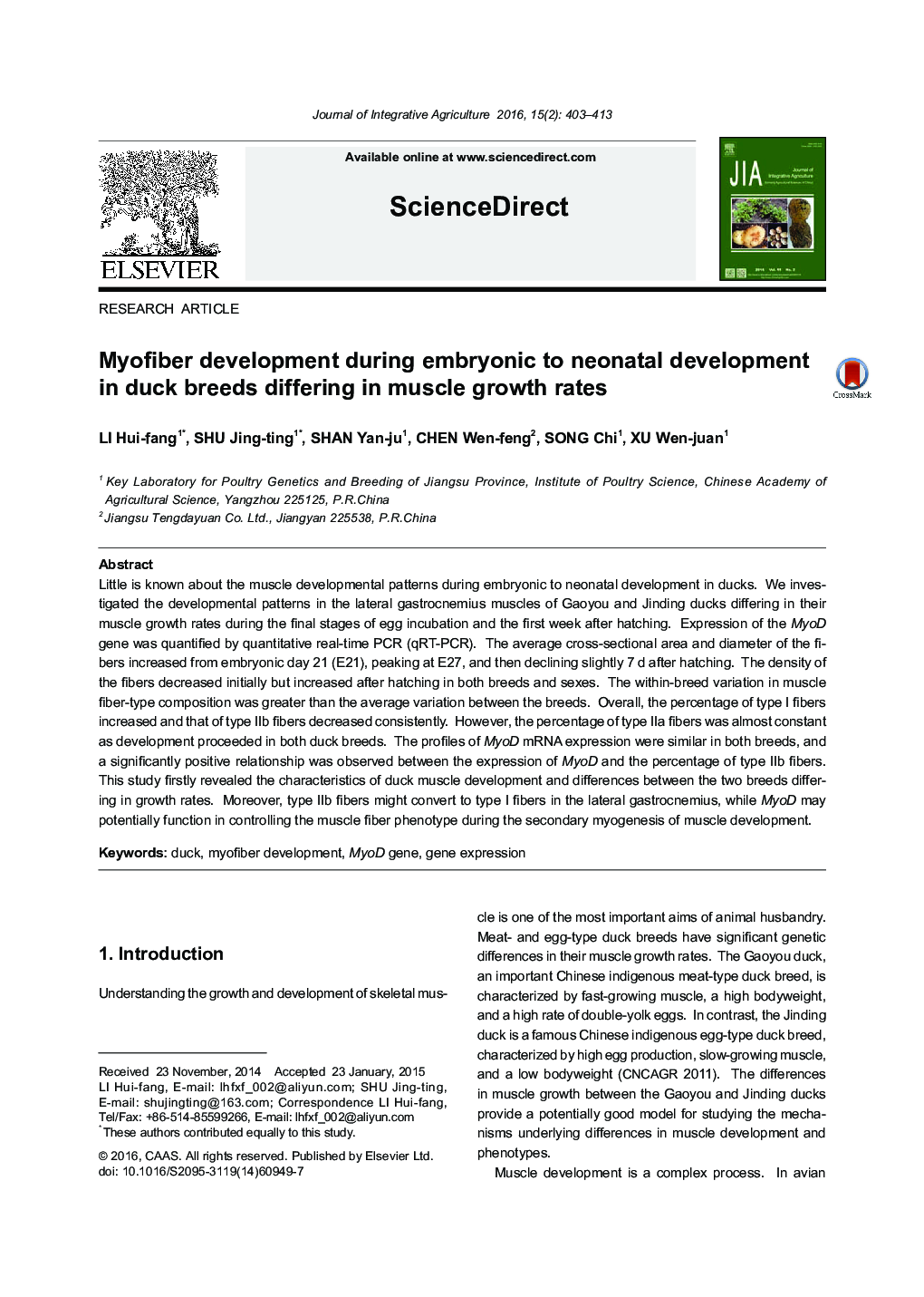| Article ID | Journal | Published Year | Pages | File Type |
|---|---|---|---|---|
| 10180056 | Journal of Integrative Agriculture | 2016 | 11 Pages |
Abstract
Little is known about the muscle developmental patterns during embryonic to neonatal development in ducks. We investigated the developmental patterns in the lateral gastrocnemius muscles of Gaoyou and Jinding ducks differing in their muscle growth rates during the final stages of egg incubation and the first week after hatching. Expression of the MyoD gene was quantified by quantitative real-time PCR (qRT-PCR). The average cross-sectional area and diameter of the fibers increased from embryonic day 21 (E21), peaking at E27, and then declining slightly 7 d after hatching. The density of the fibers decreased initially but increased after hatching in both breeds and sexes. The within-breed variation in muscle fiber-type composition was greater than the average variation between the breeds. Overall, the percentage of type I fibers increased and that of type IIb fibers decreased consistently. However, the percentage of type IIa fibers was almost constant as development proceeded in both duck breeds. The profiles of MyoD mRNA expression were similar in both breeds, and a significantly positive relationship was observed between the expression of MyoD and the percentage of type IIb fibers. This study firstly revealed the characteristics of duck muscle development and differences between the two breeds differing in growth rates. Moreover, type IIb fibers might convert to type I fibers in the lateral gastrocnemius, while MyoD may potentially function in controlling the muscle fiber phenotype during the secondary myogenesis of muscle development.
Keywords
Related Topics
Life Sciences
Agricultural and Biological Sciences
Agricultural and Biological Sciences (General)
Authors
Hui-fang LI, Jing-ting SHU, Yan-ju SHAN, Wen-feng CHEN, Chi SONG, Wen-juan XU,
